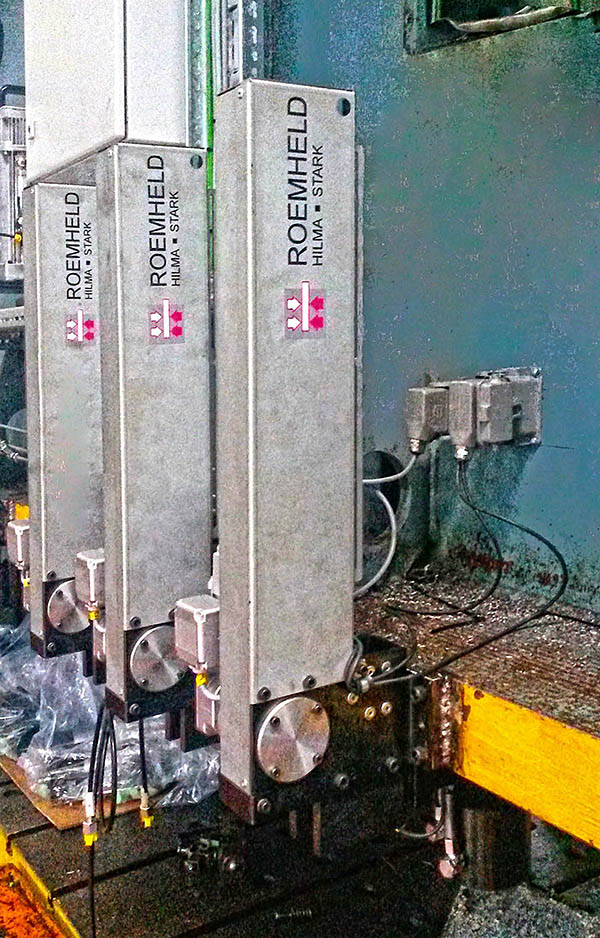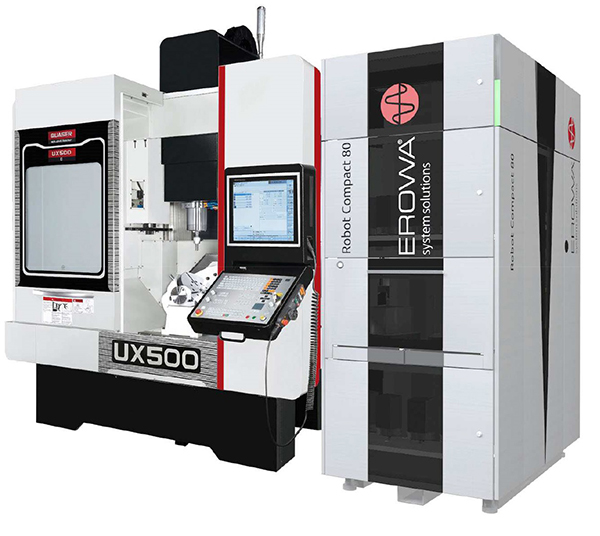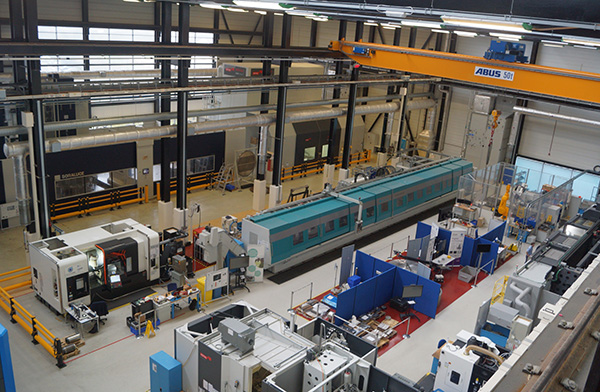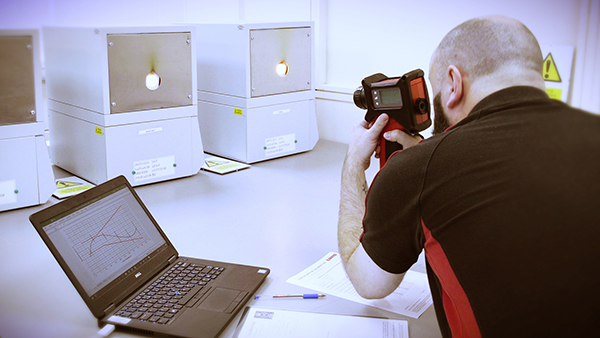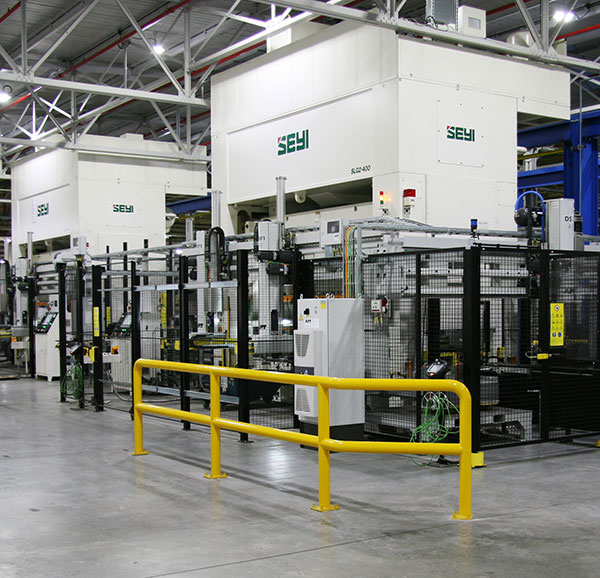The Nuclear AMRC (Advanced Manufacturing Research Centre) is part of the High Value Manufacturing Catapult alliance of seven research centres backed by Innovate UK. At its heart is an open-plan 5000 sq m workshop, containing over £35m worth of manufacturing equipment tailored for nuclear industry applications. Working with a range of challenging metals, including specialist steels and exotic alloys, the machine tools on site are protected by Vericut CNC simulation and optimisation software.

Andrew Wright, principal production engineer for the Machining Technology Group within the Nuclear AMRC, says: “Although we are the only Catapult centre focused on one sector, we also support wider UK industry with large-scale manufacturing challenges.”
One of the key drives for the centre is to take concepts that have passed TRL (Technology Readiness Level) 1 to 3, through and beyond the next phase of TRL 4 to 6 (sometimes called the ‘valley of death’). Generally, this requires a two-thirds scale demonstrator, proving the capability before the concepts go into full manufacture. And all the machine tools on the shop floor have been selected at a size that fits within this scope.
“We have some of the world’s biggest machining platforms available for R&D, taking workpieces up to 50 tonnes,” states Wright. “The Soraluce FX-12000 is one of the largest horizontal boring machines; it can accommodate workpieces up to 12 x 5 x 5 m, which is like two double-decker buses parked next to each other. With the ability to automatically change the cutting head to one of five different options, it is a very flexible manufacturing solution.
“Obviously there are a lot of other industries that use machines this size; we’ve produced large aerospace, oil and gas, and offshore wind turbine components,” he adds.
Other machines alongside the large Soraluce boring centre include: a HEC 1800 horizontal borer that can accept workpieces weighing up to 20 tonnes and measuring 3.3 m diameter by 2.5 m high; a Dörries VTL which can turn-mill parts up to 5 m diameter by 3 m high; a Heckert HEC 800 that provides heavy-duty machining in vertical or horizontal axes; and a large DMG Mori NT6600 multi-axis mill-turn machine.
These machine are representative of what may be typically deployed in the nuclear industry, but are often too expensive and important to remove from production to perform trials and tests. Instead, industry customers can access the capacity of the Nuclear AMRC without disrupting their own workflow.

Most of the machined parts produced at the Nuclear AMRC feature complex geometries, with limited clearance for cutting-tool access. In addition, the component could be a batch of one, so there is no margin for error. Protecting the machine tools has become second nature for engineers at the centre.
“With CADCAM programs generated in-house, all of the tool paths for our machine tools have to go through NC code simulation, and since we started back in 2012 we’ve worked with CGTech,” says Wright. “Vericut has been with us since the start and it’s vital that all our programs are proven in a virtual environment before being applied to the workshop.
“As you might expect with machine tools that are difficult and expensive to replace, we have detailed models and operational processes for each of them,” he adds. “With Vericut we can simulate to make sure there are no collisions between the machine’s structure, the component and the fixtures, and even the cutting tool, which could either gouge the raw material or be impinged trying to access any tight working spaces. For example, we recently completed a prototype part for a client on one our largest machines that had minimal clearance between its structure and the large component. Without an accurate digital twin of the machine tool, component and tooling, this would have been a very high-risk process.”
The Nuclear AMRC uses a variety of CAD packages, including EdgeCAM, SolidCAM and Siemens NX.
“The dedicated Vericut interface for each of the CADCAM software systems means we can run them side-by-side with uninterrupted data flow,” explains Wright. “Being a seamless integration, it allows the software to share our master tool and fixture databases.”
Vericut checks the actual G-code that the machine will run, so it provides the most accurate version of real-world events before they occur.
“Independent CNC simulation software like Vericut is vital; I could not image why any production engineer would not insist on using it,” he says. “We do not prove out any CNC code on the machine tools – everything goes through simulation. The only exception would be new capabilities not used previously. For example, CGTech recently added the facing-head option we have on the Soraluce machine. It’s a two-axis D’Andrea head that has CNC control to allow turning functions. Being able to control the cutting tool on a positioning slide enables features such as a sealing face or a taper on a flange face to be machined in situ.”
As well as equipment for decommissioning existing facilities, one of the growing areas of interest within the nuclear sector is that of small modular reactors (SMRs). An SMR is defined as a single reactor producing up to 300 MW, in comparison with current new build sites such as Hinkley Point, which has two units of 1.6 GW each.
The concept is to prove the design, manufacture approved standard parts in small batches rather than one-offs, and then factory-assemble the finished reactors instead of building on-site.
Says Wright: “Pretty much everything in a power station is a one-off. As it will be site-licensed for the particular location, it will have licences for its destination country and everything will be slightly different each time. The idea of the SMR is that, once proved, licensed and locked down, it will be exactly the same every time.”

The Nuclear AMRC team is always testing new machining techniques, to match both the geometrical requirements of the components and process needs of the industry, as well as addressing new material challenges, such as high entropy alloys.
“To fully support these areas we now use the Vericut Force module,” says Wright. “When looking at new and novel machining techniques, we want to know exactly what is going on. We input the Force data and take some measurements so we can plot out the results. It is ideal for tool life considerations; the nuclear industry is conscious of parts being damaged and tool wear is a factor. When we are looking at how to machine a component, the NC tool paths to be applied will be checked using the Force analysis module within Vericut to look for excess loading on the tools.
“It allows engineers to go back, tweak and alter settings for the machining, change cycles or even software packages. We’ve been known to use a completely different CADCAM package to get a suitable tool path. For rough machining, in particular, we are looking for a stable, efficient tool path. Here, we’ve found that the Force module is exceptionally good at narrowing down the best options. We’re also looking to see that we are not getting overloads; not going too deep or too wide on any cutting path.”
While most industry customers are looking to take time out of the manufacturing process, it is also about safety.
“What our partners and customers don’t want is any risk to high-value components caused by being at the cutting edge,” says Wright. “What we can do as a research centre using Vericut and Force is find out where that edge is and retreat slightly. Then we know it is a safe run up to these parameters and that consistent tool life will be achieved.
“The other thing we’re looking at on large machine tools is very dynamic tool paths, although we might actually end up breaching the limits of machine tools in terms of acceleration rates. If you have a dynamic optimised tool path from Vericut that is machining complex geometry, theoretically we can run at high feed rates using the latest cutting tools. The limit these days is not the cutting tool, it is other things in your process, and we can factor these into a virtual Vericut environment with Force to ensure the whole process is achievable, robust and reliable.”
For further information www.cgtech.co.uk







